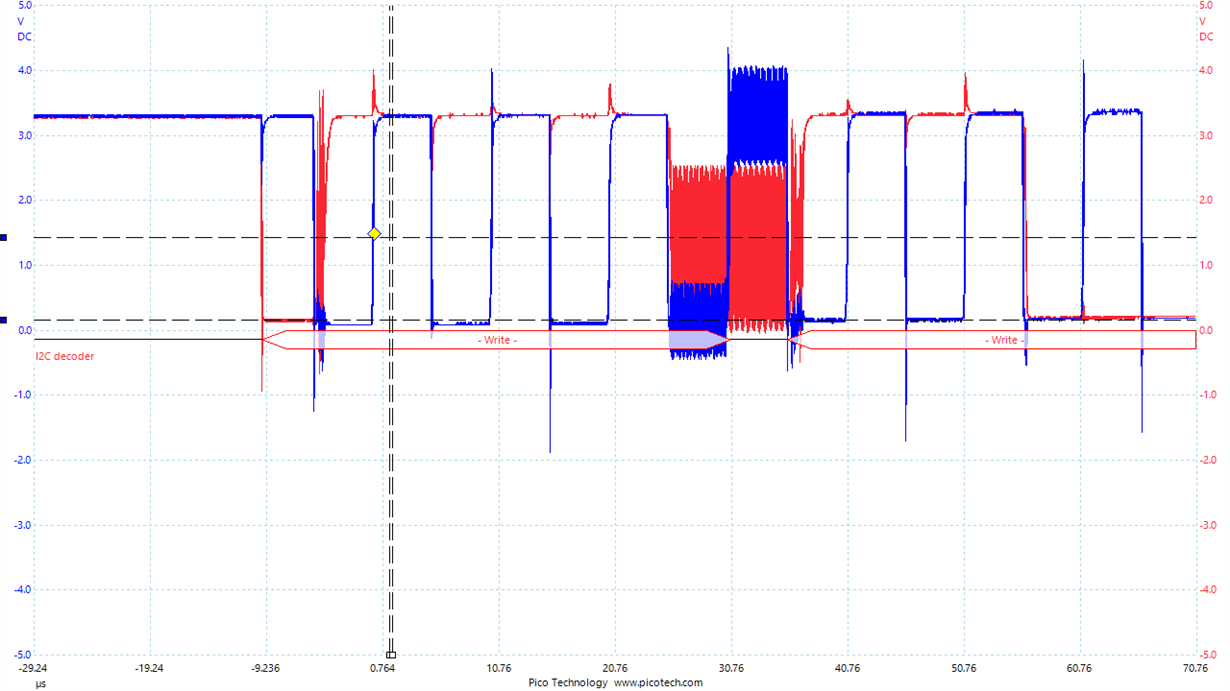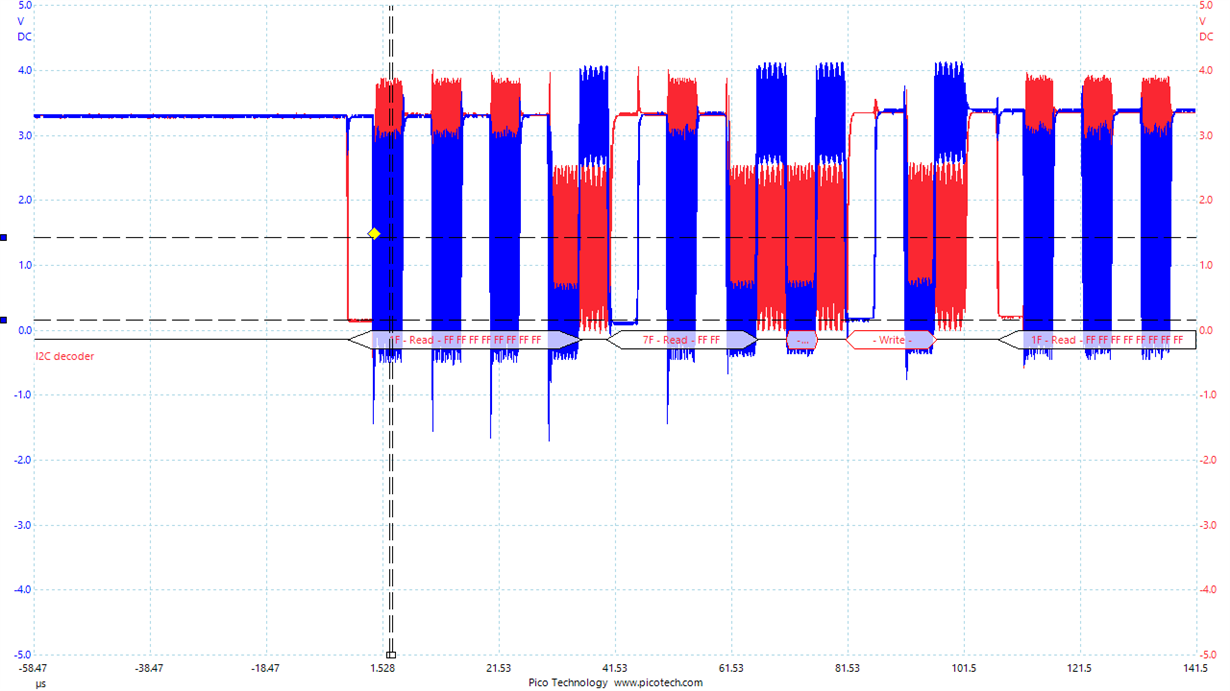Hi!
I have a board with a 3.3V IO FPGA. It implements I2C master, and I have another board with 5V PICs, that implement I2C slave. I replaced the quite old 5V tolerant FPGA to a more modern one, that has no 5V tolerant inputs. So I had to use a voltage level translator. I choose the TXS0108E. In the proto phase it worked fine. But when I tried with longer cable (about 80 cm) between the 2 boards (in the equipment we have to use that long cable), both the I2C SDA and SCL lines are oscillating. Previously I had some capacitors on the I2C slave board on the SDA and SCL lines. I understand that TXS0108E does not like capacitive load, so I removed them, oscillation remained. Then I tried different values of pull-up resistors, and no pull-up too, without any result. Of course the too low resistor value increased the Vol value.
Is there any possibility that I can use this voltage level translator with this long cable. Or should I look for another type of I2C voltage level translator.
Best regards,
Laszlo Laczo



